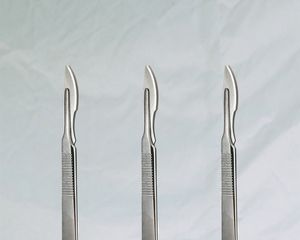
Laura San Segundo / Stocksy
When it comes to breasts, the grass often seems greener. Yes, I love my 32Ds, but sometimes I just want to wear a slinky little top and not worry about my ladies bouncing around. Meanwhile, my less well-endowed friends are forever after the cleavage I can’t seem to avoid.
There are, of course, surgical options for those unhappy with their breasts. And for those looking to enhance their chest, a breast augmentation just might be the thing you’re looking for. To learn more about the procedure—including the preparation, cost, and downtime—we spoke with board-certified plastic surgeons Raj Mohan, MD, and Samuel Lin, MD. Keep reading to find out everything you need to know about breast augmentation.
Meet the Expert
- Raj Mohan, MD, is a board-certified plastic surgeon who specializes in aesthetic and reconstructive surgeries of the face, breast, and body. He is based in Dallas.
- Samuel Lin, MD, is a board-certified plastic surgeon and associate professor of surgery at Harvard Medical School.
What Is a Breast Augmentation?
Breast augmentation—colloquially known as a "boob job" and formally known as an augmentation mammoplasty—is a surgical procedure using breast implants or fat transfer to increase the size, shape, and/or symmetry of one’s breasts. Implants are generally silicone or saline, while fat transfers use the patient’s own fat, says Mohan.
It’s important to note that a breast augmentation cannot correct severely drooping breasts—a breast lift can. For those seeking breast augmentation with already sagging breasts, a lift might be required alongside an augmentation to ensure the final results are fuller and more lifted.
There is no “typical” breast augmentation patient, though both Mohan and Lin note candidates must be in sufficiently good health to get elective surgery done. Patients must be a minimum of 18 years old to receive a breast augmentation for cosmetic purposes. The FDA has approved the use of silicone implants for breast augmentations in patients 22 years and older, though Lin says they may be used off-label in select younger patients.
Benefits of Breast Augmentations
- Increased breast fullness and projection
- More symmetrical breasts
- Improved balance of breast and hip contours
- Enhanced self-image and self-confidence
The primary benefit of breast augmentation is, obviously, an enhanced appearance of the breasts. Both Mohan and Lin say that often comes with increased self-confidence and quality of life for patients.
And it’s not just about going up a cup size or two. While larger breasts are often the desired outcome for patients, that is not always the case. The American Society of Plastic Surgery reports that breast augmentation is one of the most effective procedures to correct noticeable breast asymmetry, and breast implants can be used to correct tuberous breast deformities.
Lin warns that any patient under peer, spousal, parental, or other pressure is not a good candidate for this procedure, nor are patients with body dysmorphia.
How to Prepare for a Breast Augmentation
As tends to be the case with these sorts of procedures, the most important decision is finding the right doctor. It should go without saying that your cosmetic surgeon should be board certified and someone you trust. Look at plenty of before and after photos to get a feel for a cosmetic surgeon’s aesthetic style, and see if it aligns with what you’re looking for. You want to be able to clearly explain your goals to the surgeon—and reference photos never hurt.
Both Lin and Mohan emphasize the importance of being well-informed about all aspects of the surgery. Patients should consider the financial and time commitment needed to have the procedure and to recover, as well as any potential physical or emotional side effects.
When it comes to the procedure itself, patients have more choices than ever to help customize a new look—from filling type to shape to profile to size. If opting for implants, there’s no one type generally considered best. Options include saline, silicone, and gummy bear implants.
- Saline implants are filled with sterile saltwater and tend to provide a uniform shape, feel, and firmness to the breast. Should an implant leak, a saline implant would simply collapse, allowing the saline to be absorbed and naturally expelled by the body.
- Silicone implants are made with silicone gel, which ultimately feels more like natural breast tissue. Leaking silicone implants will not simply collapse. If implants leak, the gel will either remain in the implant shell or escape into the breast implant pocket. Silicone implants are FDA-approved for use in women aged 22 or older.
- Gummy bear implants are form-stable and maintain their shape even if the implant shell is broken. The consistency of the gel inside gummy bear implants tends to be thicker and firmer than traditional implants. They also require a slightly longer incision in the skin.
There are some differences in cost, feel, and incision requirements, so Lin recommends consulting with your surgeon to find the right implant for you.
Even after choosing an implant, there’s still shape and size left to consider. Saline and silicone gel implants are typically rounder, while gummy bear implants tend to come in various shaped and rounded options. Rounder implants help achieve a fuller upper breast, while shaped implants create a sloping look to the breast profile. As for size, implants range from around 150 cc to 800 cc. Size tends to depend on existing breast size, your personal goals, and the cosmetic surgeon’s recommendations.
As the surgery approaches, Lin suggests patients identify a family member or support person to help them through the recovery process. An important note: As of now, there are no implants that last forever, so they will have to be replaced at the end of their natural lifespan. Mohan says that while manufacturers generally provide warranties for up to 10 years, there’s a lot of fluctuation: ”Some implants can last six to seven years while others may last 20,” he explains. That being the case, a woman in her 30s can expect to replace her implants anywhere from two to five times in her life (while implants are becoming more durable with new discoveries, Mohan says this is a good rule of thumb for now).
What to Expect During a Breast Augmentation
Breast augmentations are typically performed under general anesthesia, so patients shouldn’t expect much of anything during the procedure. Mohan notes that while procedure time differs from patient to patient, you can generally expect this type of surgery to last a few hours.
Once a patient is under anesthesia, it’s time for the incision. There are a few techniques surgeons use to do this:
- An inframammary incision is made in the crease underneath the breast and leaves a thin, one- to two-inch scar. Advantages of this incision type include a wider access point and easy scar concealing. Lin says this is the most common type of incision used.
- A peri-areolar incision is made around the outer edge of the areola, with the goal of camouflaging the scar within this natural area of pigment transition. This incision is usually used for patients getting a mild-to-moderate breast lift at the same time.
- A trans-axillary incision is made through the armpit, through which a surgeon places the breast implant using specialized instruments. While this leaves a small scar on the armpit, it leaves breasts completely scar-free.
- A trans-umbilical incision is made just above the belly button. Breast implants are then inserted through the incision and brought up to the breast. Like a trans-axillary incision, a transumbilical incision leaves no scarring on the breast itself (though there is a scar at the incision point). This approach isn't usually possible with silicone implants and may void the warranty of saline implants so be sure to ask your doctor.
Once an incision is made, implants are then inserted either under the pectoral muscle or directly behind the breast tissue, over the pectoral muscle. Placement depends on implant type, desired goals, patient body type, and surgeon recommendations.
Incisions are closed layered sutures using sutures, skin adhesive, and/or surgical tape to close the skin. And voila, a breast has been augmented.
Aftercare
While the aftercare process is fairly lengthy, Lin says most patients will go home the day of the surgery. Once the anesthesia wears off, patients are sent home with a medical compression bra overtop incision bandages, which Mohan says aids in minimizing swelling and keeping any strain off stitches. This will be worn for all of the initial recovery process.
Of course, recovery varies depending on incision location, implant size, and implant location, though Mohan says many patients report chest tightness post-procedure regardless of the details. He also notes that patients might find their breasts to be sitting too high on the chest, but he says not to worry—the implants will be brought down naturally as they settle.
Unfortunately, the first few days post-op are likely to be met with some discomfort and tenderness (as is the case with most surgeries). That being said, Mohan says it should be more than manageable—in his experience, many patients don’t need or even use their prescribed pain medications, and those who do generally use it for the first week or less.
While Mohan says that patients usually return to work four or five days after the surgery, he warns that implants placed under the muscle may require a full week of recovery. Non-impact activities can pick back up in about a week or so, and Lin says patients can resume light aerobic exercise within two to four weeks post-op. Both doctors warn that any exercise involving impact should be held off for at least a month.
Certain upper body exercises can be resumed in six weeks or so, as well as lifting things above the head and wearing underwire and push-up bras.
Potential Side Effects
As is the case with any surgery, breast augmentations are not without risk. Potential side effects include scarring, bleeding, bruising, infection, dissatisfaction with the cosmetic result, and change in or loss of nipple sensation, says Lin.
What makes breast augmentations potentially riskier than other surgeries is the use of implants. Implant leakages and ruptures, implant-associated anaplastic large cell lymphoma, wrinkling of the skin over the implant, and faulty implant positioning are all very real risks one should consider. Another implant-related risk is capsular contracture. Normally, the body will form a capsule of scar tissue around the implant, but this capsule can occasionally distort the implant, causing issues that sometimes require more surgeries to fix, according to Lin. Other side effects include general anesthesia risks, fluid accumulation, hematoma, and persistent pain.
While there are several very real risks, breast augmentations are incredibly routine procedures. The risks are just that: risks, not certainties. According to Mohan, the surgery has been the most commonly performed cosmetic surgical procedure since 2006, with upwards of 300,000 patients going under the knife every year.
The Cost
Of course, the price of breast augmentation varies nationwide. That being said, Mohan says a typical price range is between $5,000 and $10,000. This falls roughly in line with 2020 data from the American Society of Plastic Surgeons that reports the average breast augmentation cost as between $4,516 and $6,000. That price does not include anesthesia, operating room facilities, or any other related expenses though.
The Final Takeaway
We can’t—and won’t—tell you if a breast augmentation is right for you. It’s a big undertaking with some serious recovery time and a handful of potential risks. But if you’re looking to enhance breast size, shape, and/or symmetry and are willing to pay for big results, a breast augmentation just might be right for you.

















